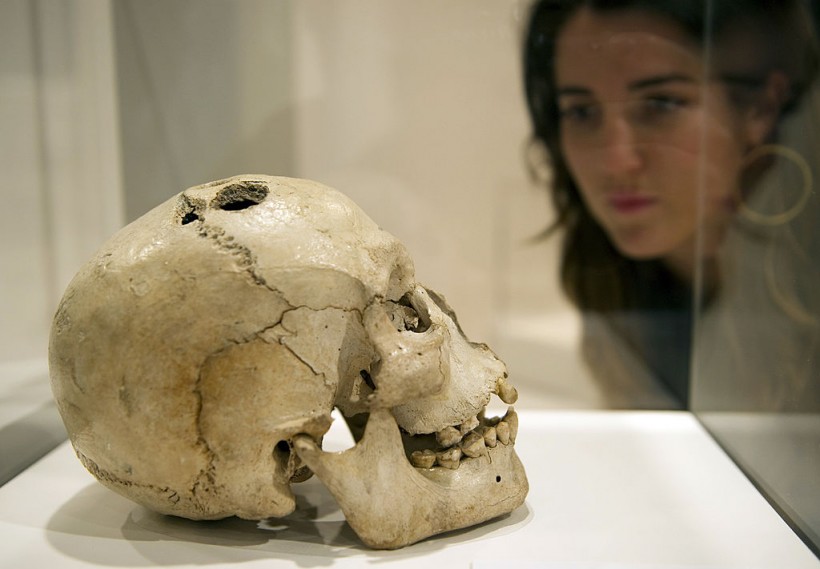Archaeologists found new evidence of trephination, a medical procedure that entails cutting a hole in the skull, as early as the late Bronze Age in the ancient city of Megiddo, Israel.
Rachel Kalisher of Brown University's Joukowsky Institute for Archaeology and the Ancient World led the excavations in the historic site and uncovered the remnants of two upper-class brothers who lived in Megiddo around the 15th century B.C.

A woman looks at a bronze age skull from Jericho, dated to between 2200 and 2000 BCE, showing the ancient surgical procedure of trephination, the procces of cutting a hole through the skull to the surface of the brain, on display during a preview of the Wellcome Collection's major new exhibition "Brains: mind of matter" in London on March 27, 2012.
Cranial Surgery
The team discovered that one of the brothers had undergone an angular notched trephination, a form of cranial surgery, not long before he passed away.
The process entails cutting the scalp, carving four intersecting lines in the skull using a tool with a sharp beveled edge, and creating a square-shaped hole with leverage.
Kalisher claims that the trephination is the earliest example of such procedure in the Ancient Near East.
"We have evidence that trephination has been this universal, widespread type of surgery for thousands of years," Kalisher said in a press release statement.
"But in the Near East, we don't see it so often-there are only about a dozen examples of trephination in this entire region. My hope is that adding more examples to the scholarly record will deepen our field's understanding of medical care and cultural dynamics in ancient cities in this area."
Read Also: Archaeologists Uncover the Collapse of an Ancient Empire from 3,200-year-old Trees in Turkey
Elite Meggido Brothers
According to Israel Finkelstein, co-author of the study and director of the School of Archaeology and Maritime Cultures at the University of Haifa, Megiddo was situated over a significant land route known as the Via Maris that linked Egypt, Syria, Mesopotamia, and Anatolia 4,000 years ago.
By the 19th century B.C., the city had developed into one of the richest in the region as it brimmed with temples, palaces, gates, fortifications, and many more.
The two brothers' remains, according to Kalisher, came from a residential area next to the late Bronze Age palace at Megiddo, indicating that they were elite citizens and perhaps even royalty.
The brothers received treatment that probably would not have been available to most residents of Megiddo, as seen by the trephination and the fact that they were buried with Cypriot pottery and other priceless items.
However, Kalisher noted that there is still a lot that archaeologists must uncover over the last 200 years to know more about trephination.
For instance, it is unclear why some trephinations are round, indicating the use of an analog drill, while others are square or triangular. Furthermore, it is unclear what ancient peoples were even trying to heal and how prevalent the treatment was in each region.
Kalisher will conduct a follow-up investigation that will look at trephination in various locations and ages as part of an effort to learn more about historical medical practices.
The findings of the team was published in PLOS ONE.
Related Article: Archaeologists Discover Oldest Workshop in Ethiopia Dating Back to Over 1.2 Million Years Ago










